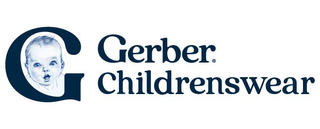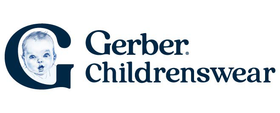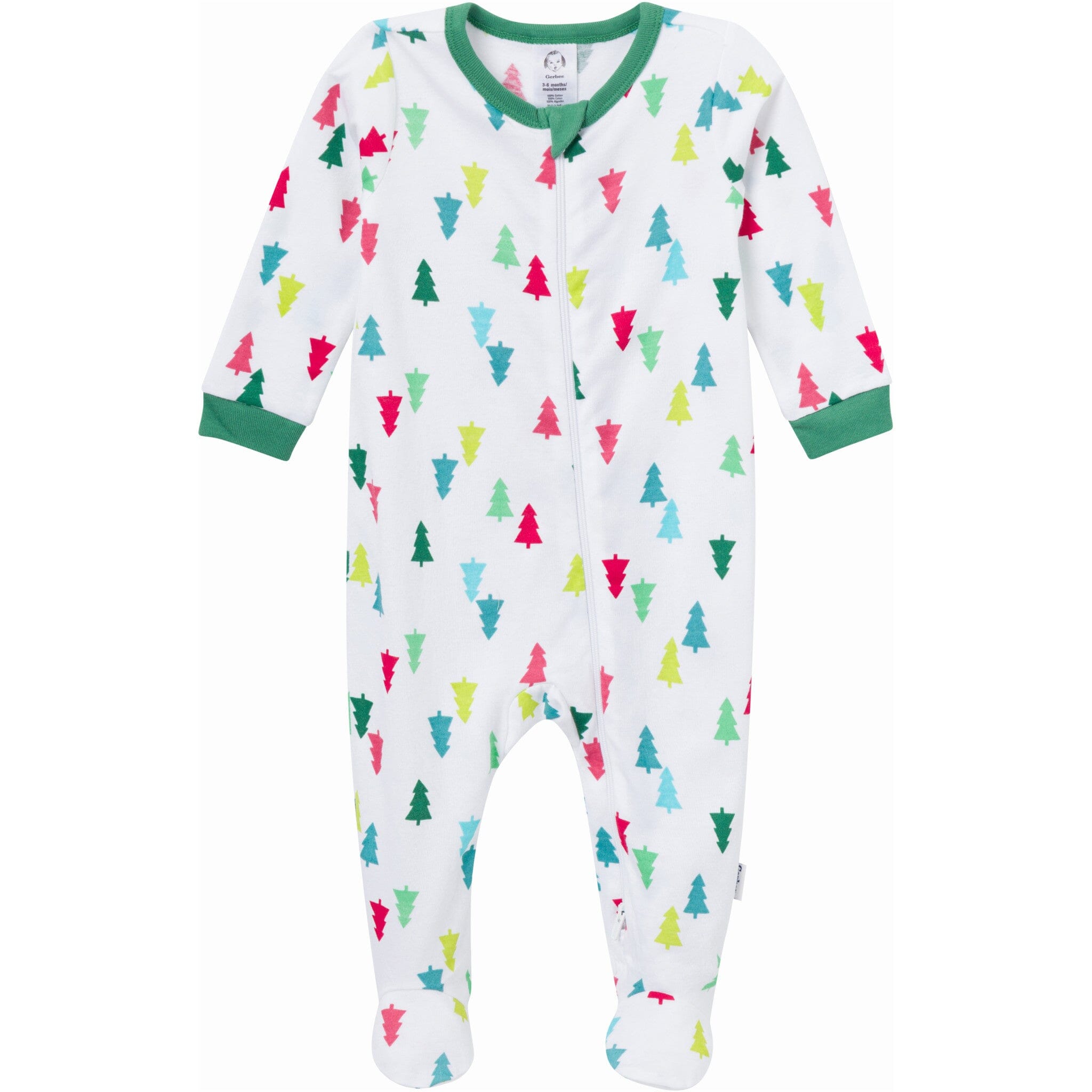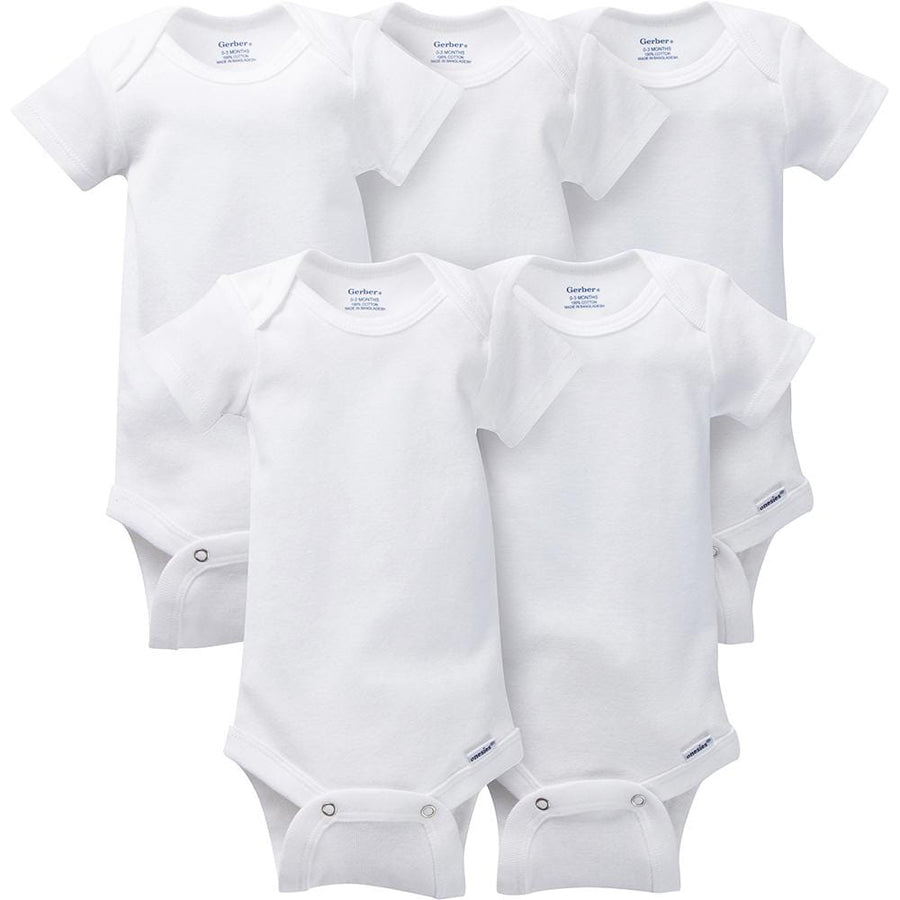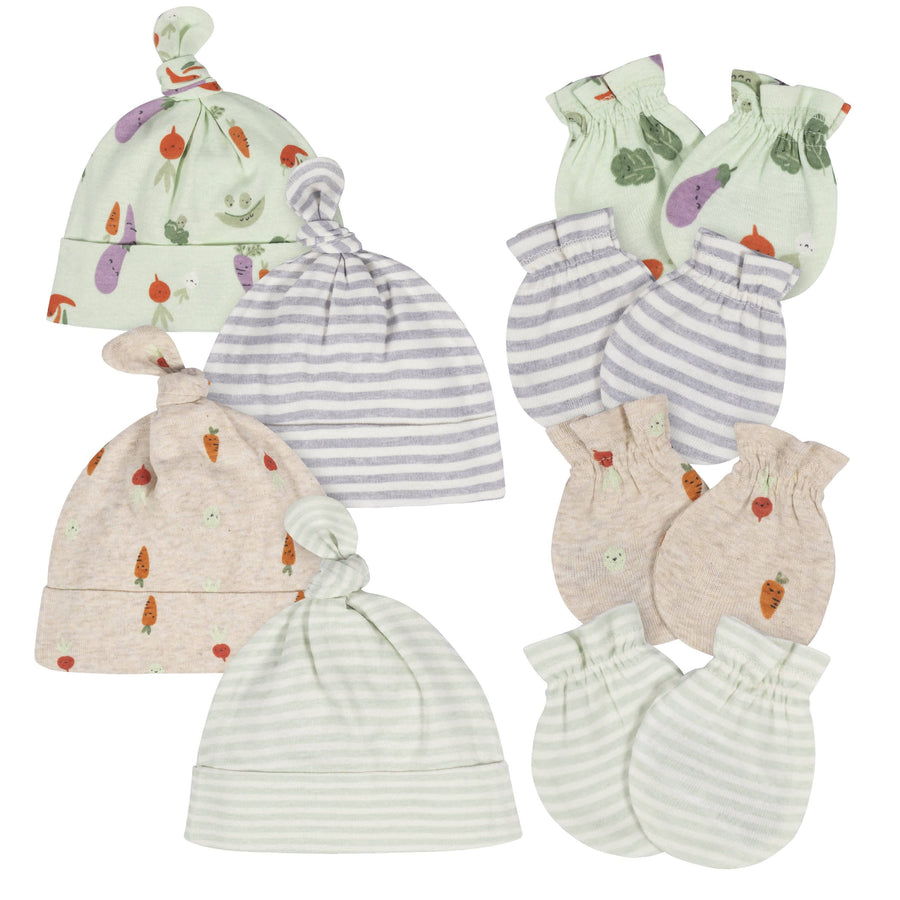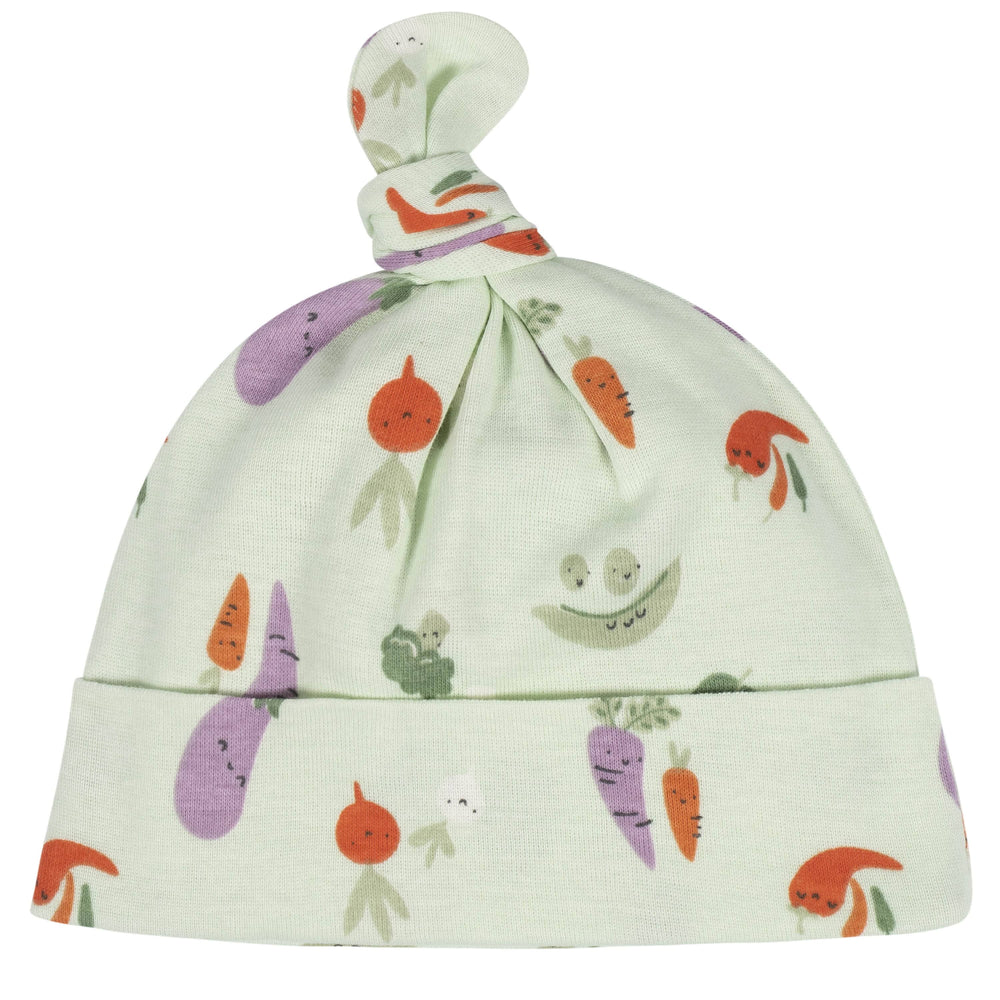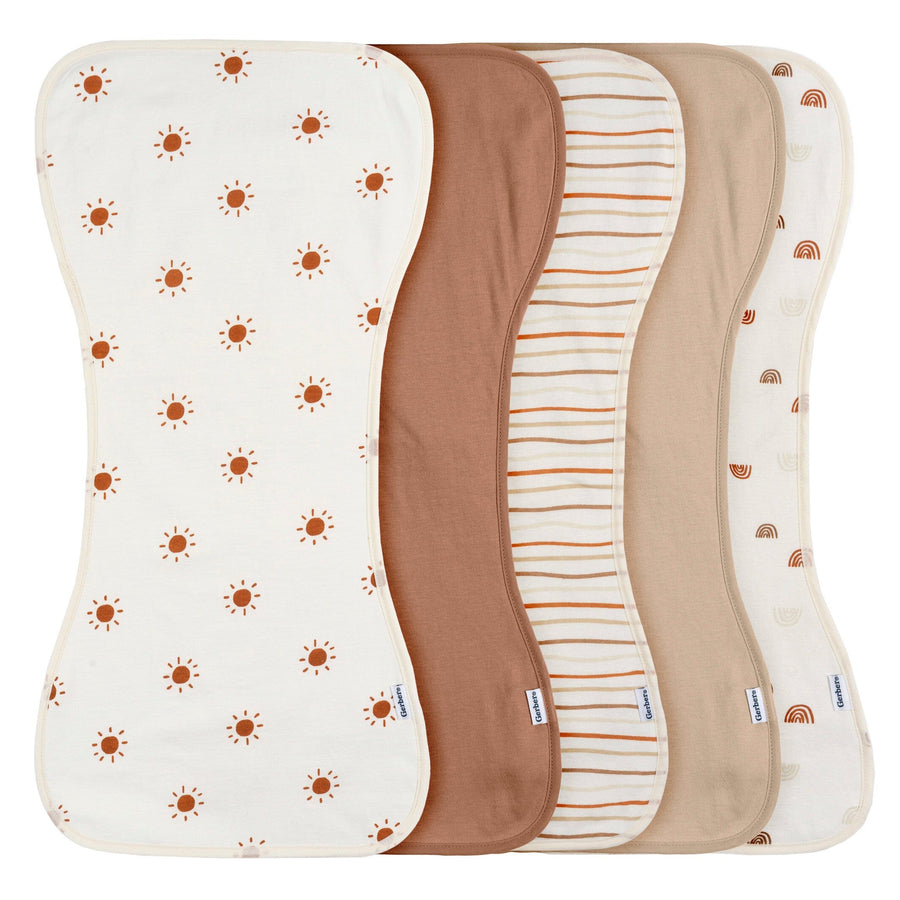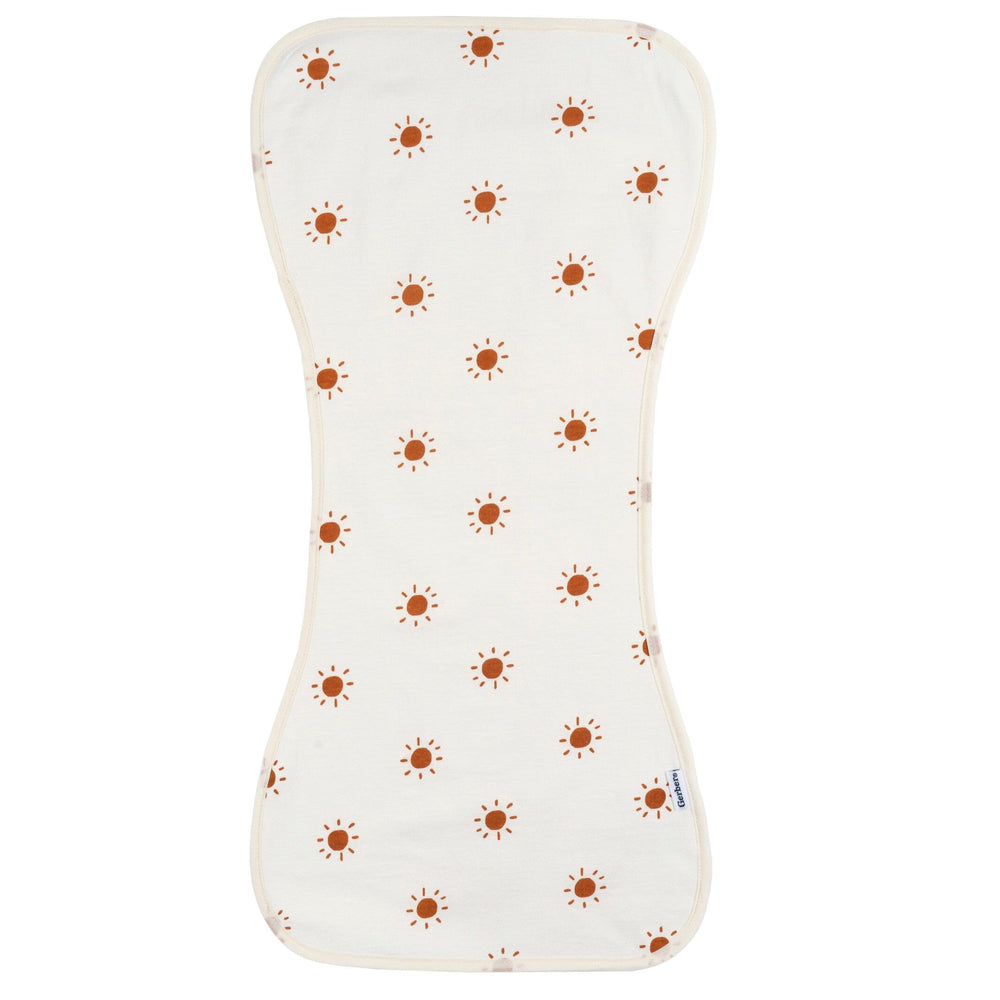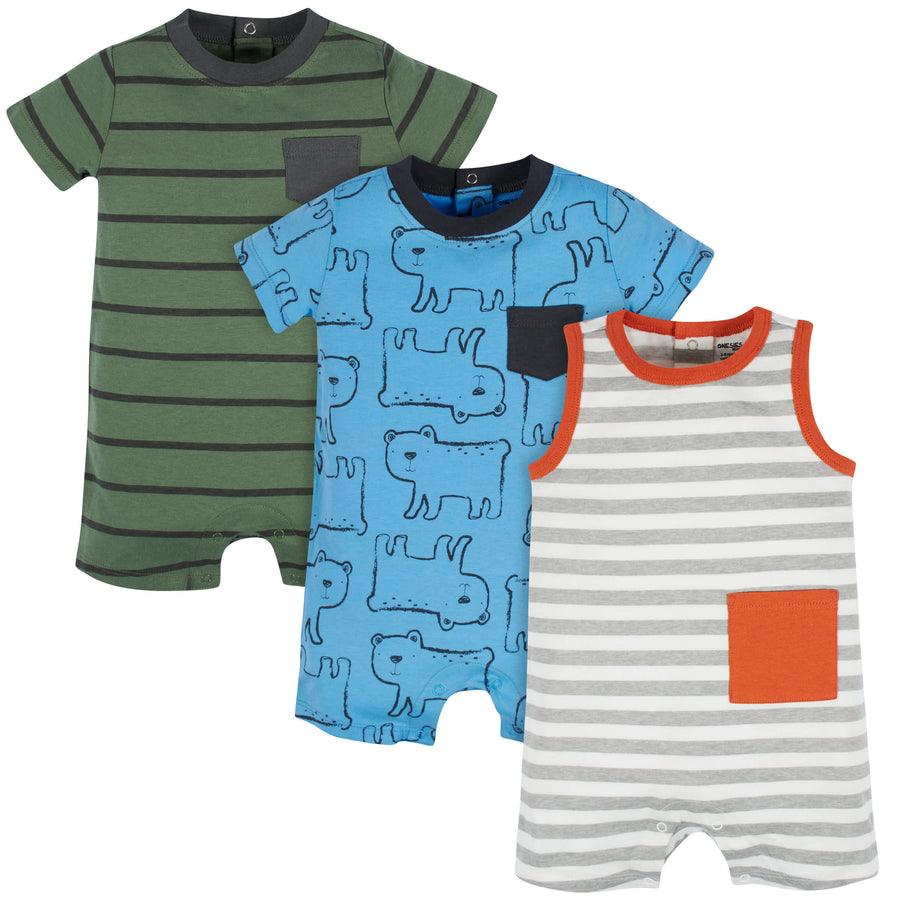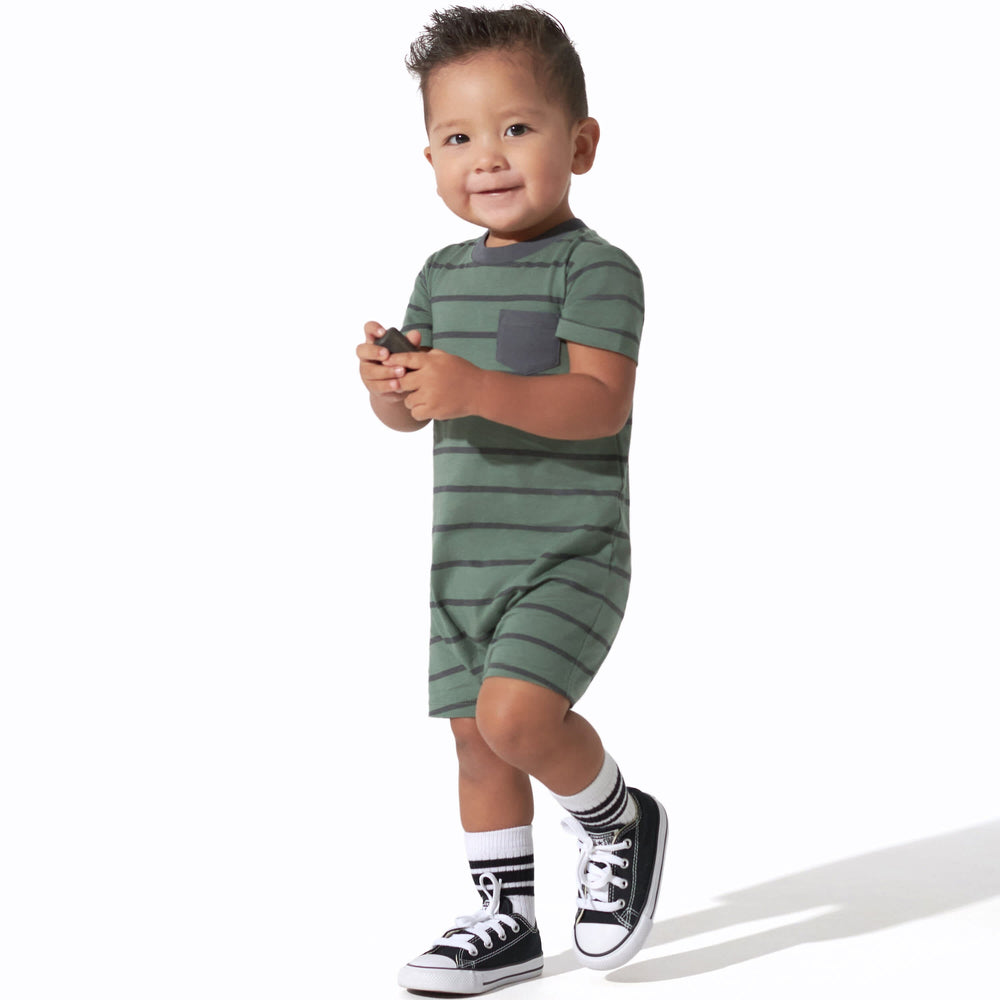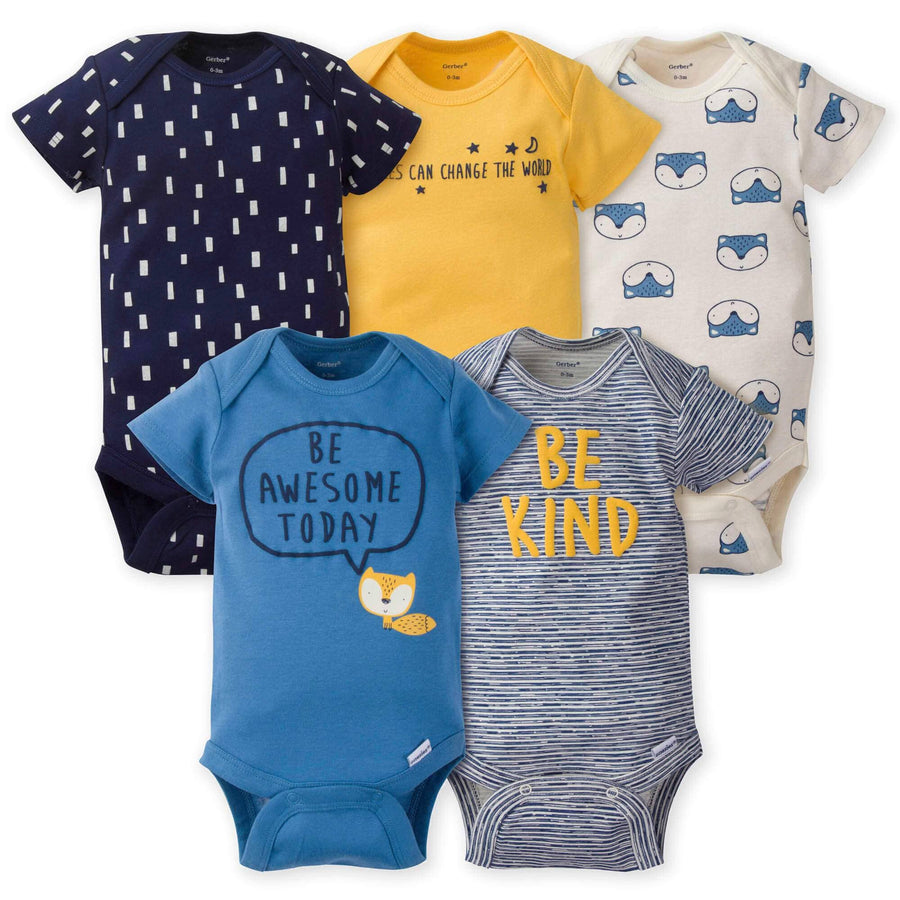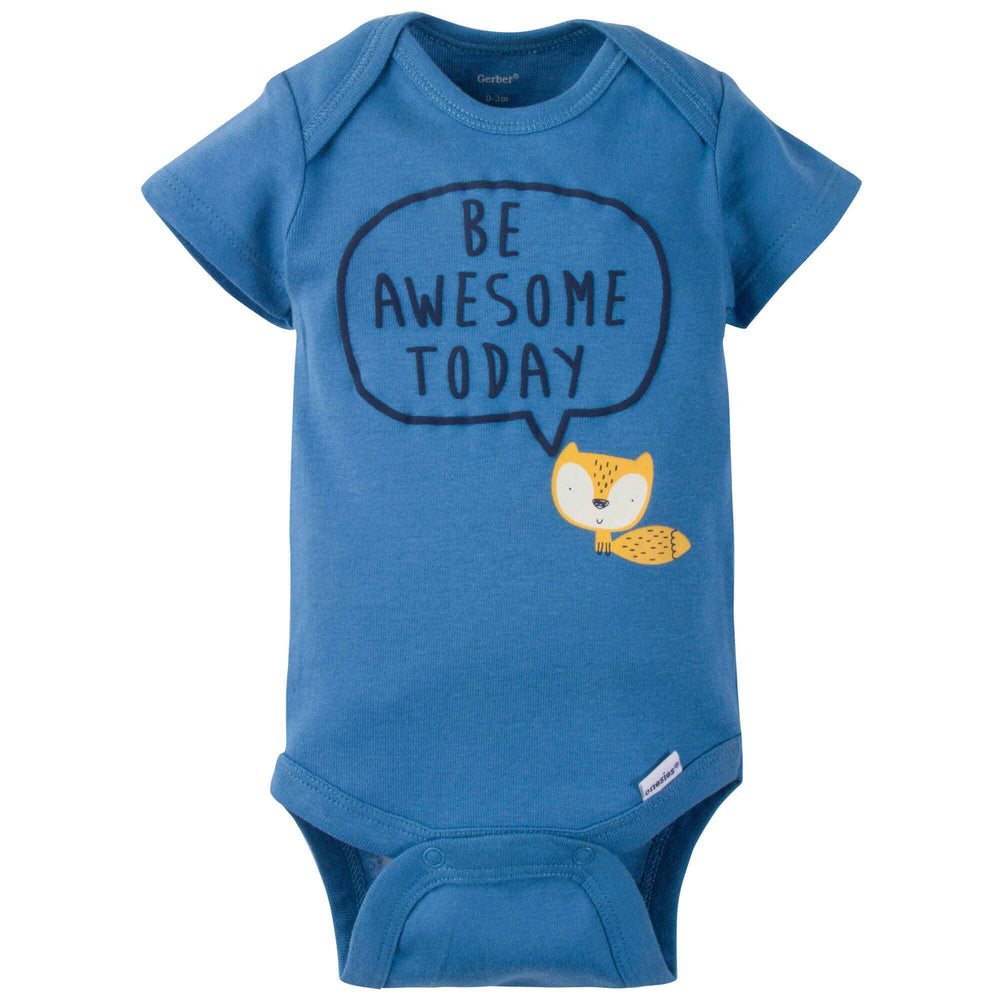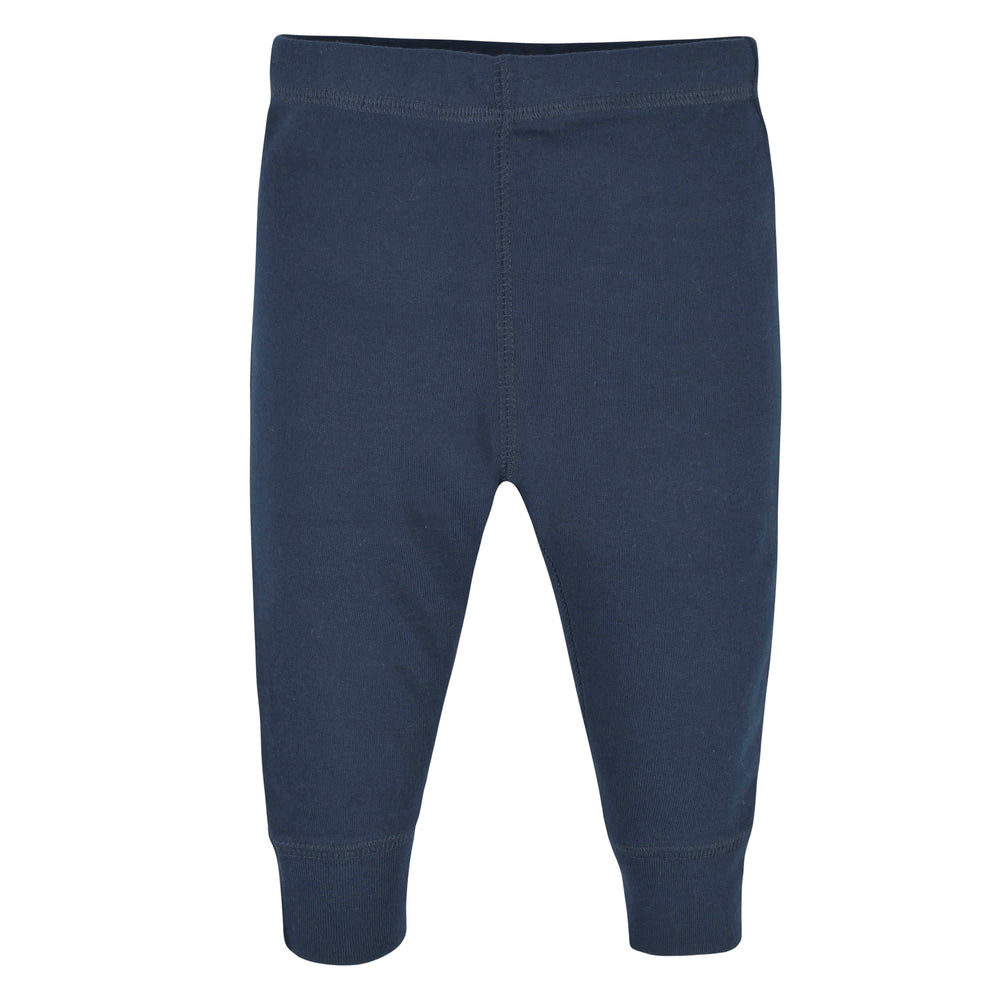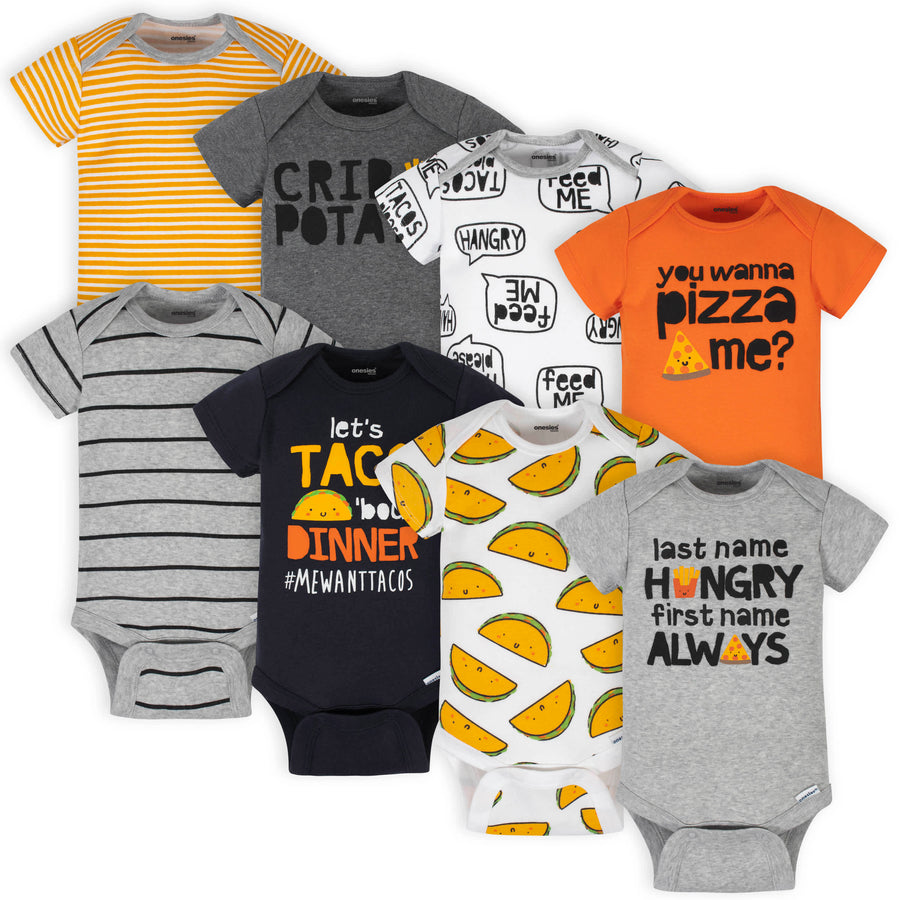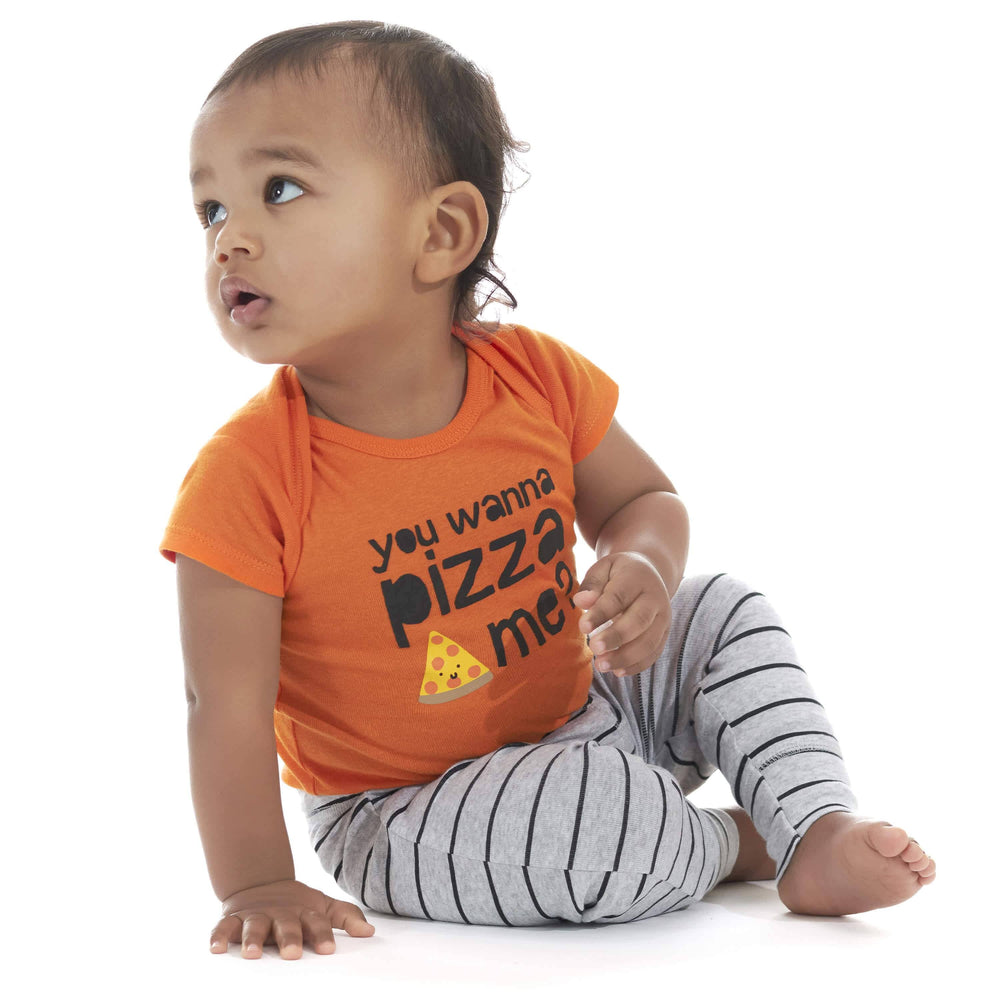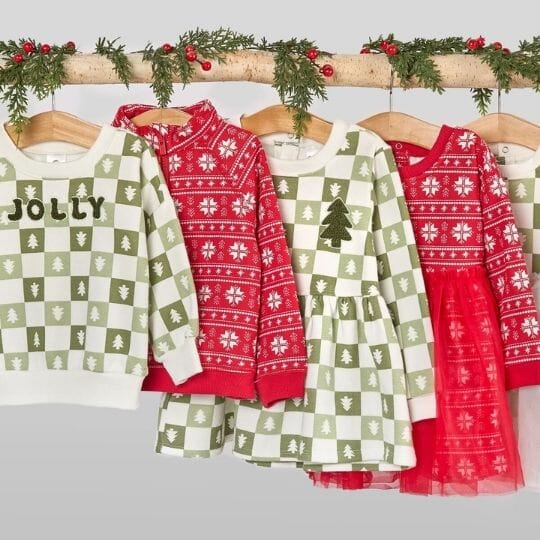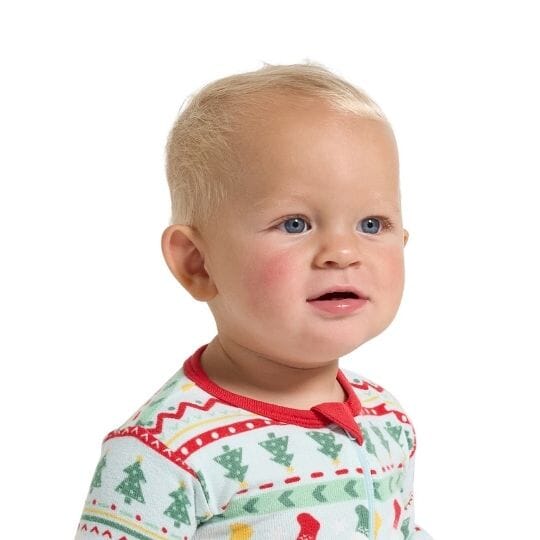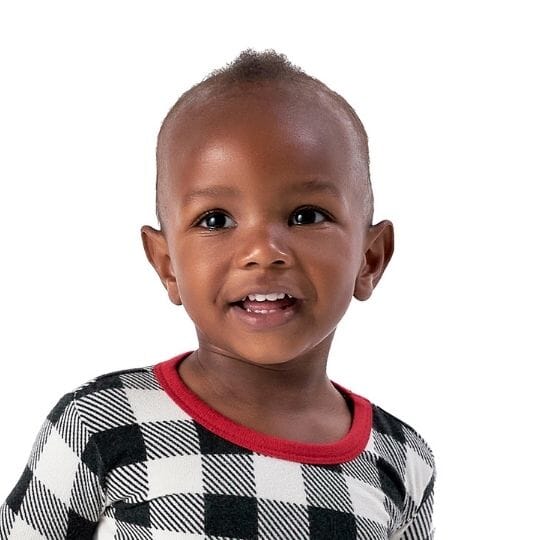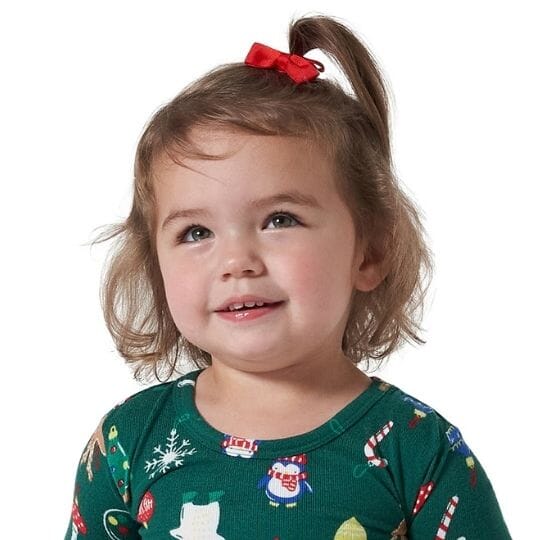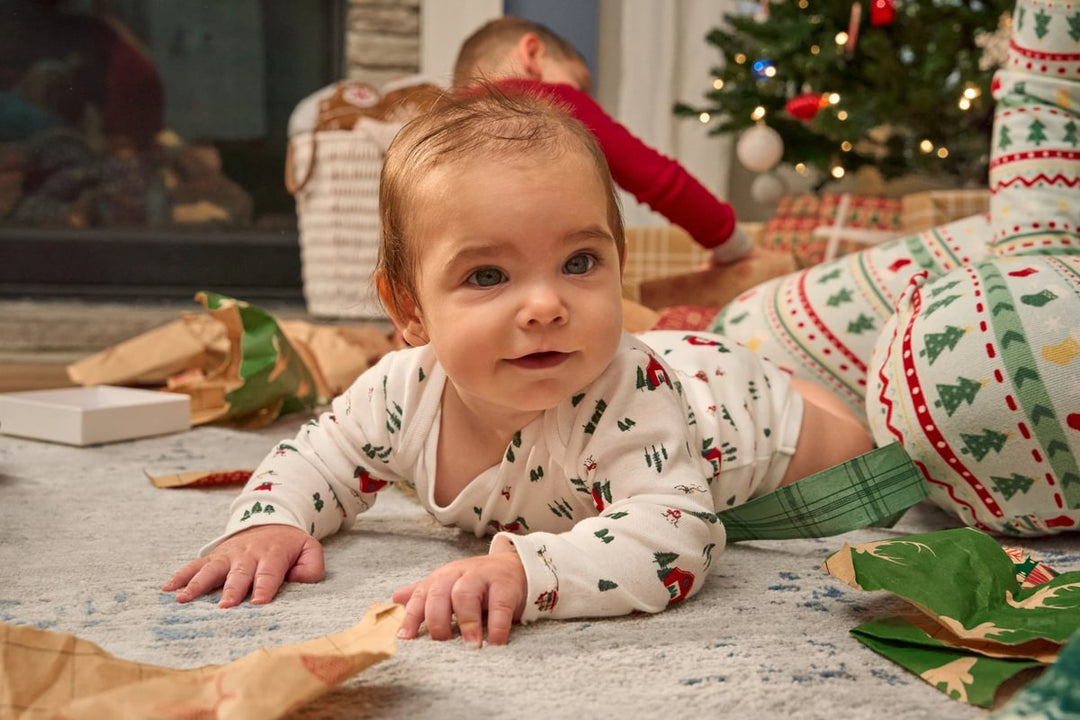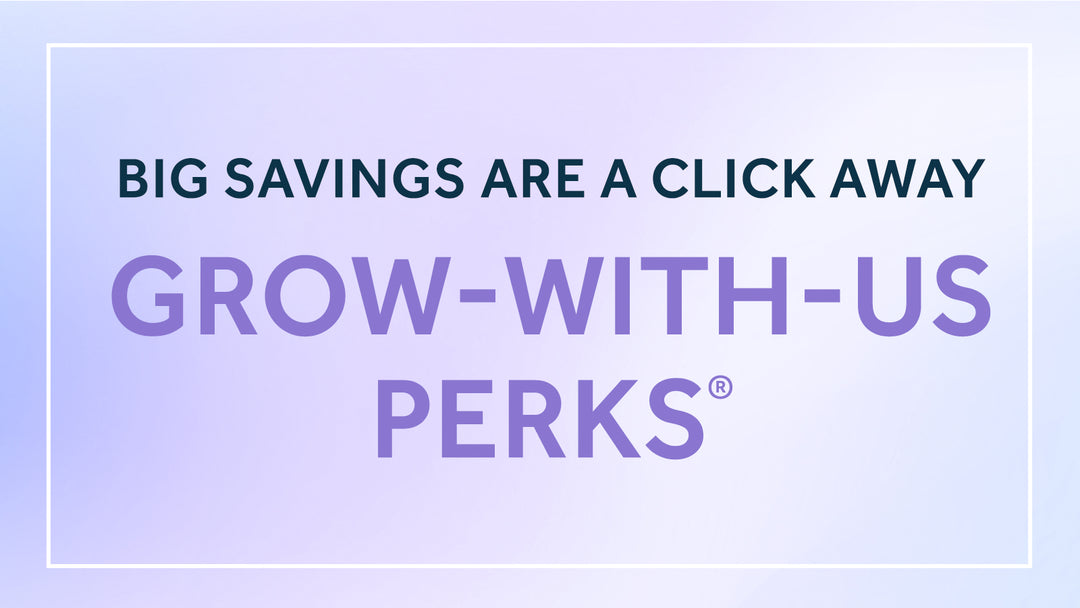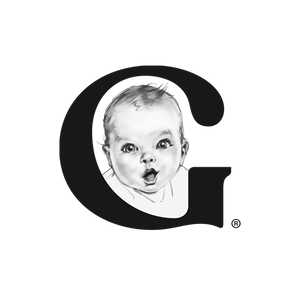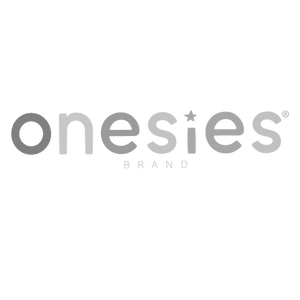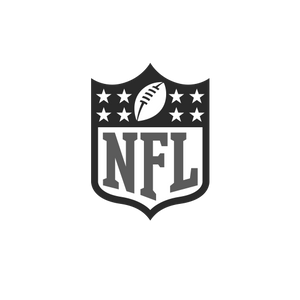The Ultimate Baby Essentials Checklist for New Parents
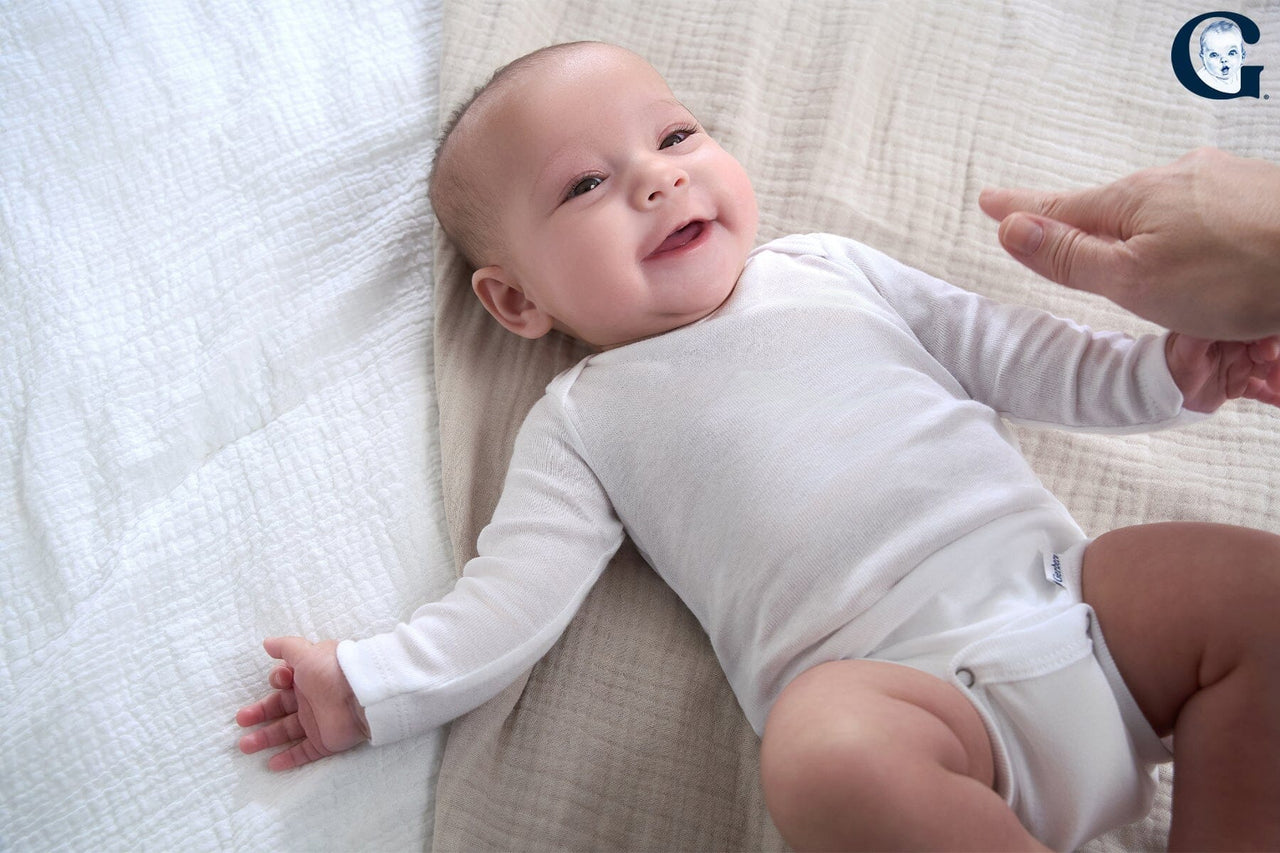
Welcoming a new baby into your life is an exciting and transformative experience. However, preparing for your little one’s arrival can feel overwhelming, especially when faced with endless options for baby essentials. As a new parent, it’s important to focus on practicality and quality when choosing products that support your baby’s comfort and well-being.
At Gerber Childrenswear, we understand that simplifying this process can make a world of difference. This comprehensive baby essentials checklist is designed to help you prioritize what truly matters, ensuring that you have everything you need for your newborn’s first year. Whether you're preparing your registry or simply gathering must-haves, this guide will make the process effortless.
Table of Contents
- The Importance of Practicality and Quality in Baby Essentials
- Newborn Clothing Essentials
- Baby Nursery Essentials
- Newborn Diapering Essentials
- Baby Bath Time Essentials
- Baby Feeding Essentials Checklist
- Baby Travel Necessities
- Baby Health Essentials
- Baby Playtime and Development Essentials
- Potential Unique Features
- Frequently Asked Questions
- Finding Your Baby Essentials
The Importance of Practicality and Quality in Baby Essentials

When selecting baby must-haves, parents should consider practicality and quality above all else. Every item in a newborn checklist should serve a practical purpose, offer durability, and be comfortable for your baby. Choosing high-quality products ensures longevity and safety, which are crucial for a baby’s early development.
-
Comfort & Safety: Babies have sensitive skin, so selecting baby essentials made from breathable materials is a priority. Our Softest Edit Collection provides ultra-soft fabrics designed to keep newborns cozy while being gentle on their skin.
-
Ease of Use: New parents quickly learn that convenience is key. Items that offer easy dressing, cleaning, and portability make daily routines more manageable. For instance, baby essentials like onesies with snap closures or zipper pajamas simplify diaper changes, while a lightweight, well-organized diaper bag ensures everything is within reach during outings.
-
Durability & Versatility: Babies grow rapidly, making it essential to choose versatile pieces that can be mixed, matched, or adapted for different seasons. A baby essentials list should include items like expandable Onesies® bodysuits and adjustable swaddles that adapt as the baby grows.
-
Value & Longevity: Many families are looking for baby essentials that offer both affordability and lasting use. Choosing budget-friendly, multi-functional items—like cribs that convert into toddler beds or high chairs that grow with your child—can help stretch your dollar further. These smart, versatile products provide long-term value without the need for frequent replacements.
-
Trusted Brands & Recommendations: Choosing reputable brands like Gerber Childrenswear ensures that every product meets high safety and quality standards. Parents can rely on customer reviews, pediatrician recommendations, and registry guides to curate the ultimate baby essentials checklist that best suits their needs.
By focusing on quality and practicality when assembling a baby essentials list, you can create a functional, efficient, and stress-free environment for their newborn’s arrival.
Newborn Clothing Essentials
Onesies® Bodysuits

A staple in any baby essentials list, Onesies® bodysuits provide easy dressing and all-day comfort. Look for soft, breathable cotton options like those from Gerber Childrenswear's Onesies® Brand. These versatile pieces serve as the foundation of your baby's wardrobe and are designed for layering, making them ideal for both warm and cool weather.
How many do you need? We recommend at least 7-10 bodysuits for your newborn in their current size, as frequent spit-ups and diaper leaks may require multiple changes per day. Having a mix of short-sleeve and long-sleeve options ensures you're prepared for temperature fluctuations. It’s also a good idea to have a few bodysuits available in the next size up so you’re prepared as your baby grows.
Pajamas and Sleepwear
Ensuring your baby sleeps comfortably is crucial. Opt for footed pajamas, sleep gowns, or wearable blankets that make nighttime diaper changes simple. Gerber Childrenswear's Sleepwear Collection offers cozy and safe options made with soft, breathable fabrics that support better sleep. Choose pajamas with snap or zipper closures to make late-night changes hassle-free.
For newborns, sleep gowns with elastic bottoms provide easy access for diaper changes without fully undressing your baby. Wearable blankets provide a safe, swaddle-like feel for your baby, but with an easy zipper for nighttime changes. As your little one grows, footed pajamas keep tiny toes warm throughout the night. Remember that newborns often sleep 16-20 hours a day, so having 4-6 sleepwear options is recommended.
Gerber Childrenswear's sleepwear is designed with both safety and comfort in mind, ensuring your baby sleeps peacefully through the night.
Socks, Hats, and Mittens

Keeping your baby warm is essential, especially in the early months when temperature regulation is still developing. Soft, non-slip socks keep tiny toes warm, while warm hats and mittens help prevent heat loss and accidental scratching. Stock up on multiple pairs to ensure your baby stays snug and comfortable throughout the day.
Our Wiggle-Proof™ technology helps socks stay on active little feet. For a complete newborn checklist, it is recommended that you have 6-8 pairs of socks, 2-3 hats, and 2-3 pairs of mittens.
Seasonal Outfits
Weather-appropriate clothing ensures your little one is comfortable year-round. In the summer, opt for lightweight, breathable cotton outfits. For colder months, layering with cozy sweaters, footed pants, and fleece-lined jackets are good winter essentials that will keep your baby warm without overheating.
When building a seasonal wardrobe, remember these essentials:
Summer:
- Lightweight rompers and playsuits
- Breathable cotton shirts and shorts
- Sun hats with UPF protection
- Light muslin blankets for swaddling
Winter:
- Fleece-lined outerwear
- Layerable bodysuits, shirts and sweaters
- Thick socks and booties
- Warm hats that cover the ears
For transitional seasons like spring and fall, focus on layerable pieces that can be added or removed as temperatures fluctuate throughout the day. Having 4-6 seasonal outfits for your current season, along with a few pieces for the upcoming season, ensures you're always prepared.
Baby Laundry Tips
Washing your baby's clothes properly is just as important as selecting the right ones. Use gentle, baby-safe detergent to protect delicate skin, and always wash new clothing before the first use to remove any potential irritants. Separating baby laundry from other household laundry can also help maintain fabric softness and prevent exposure to harsh chemicals.
Consider these essential laundry practices for baby clothes:
- Pre-Treat Stains Promptly: Formula, breast milk, and diaper blowouts can cause stubborn stains. Treat them quickly with baby-safe stain removers or natural solutions like baking soda paste.
- Skip Fabric Softeners: These products often contain chemicals that can irritate a baby's sensitive skin. Instead, add a quarter cup of white vinegar to the rinse cycle to naturally soften fabrics.
- Use Mesh Laundry Bags: Small items like socks, mittens, and hats can easily get lost in the washer or dryer. Keep them together in mesh laundry bags.
- Dry Appropriately: While some items can be machine-dried on low heat, delicate fabrics might need to be air-dried. Always check care labels for specific instructions.
- Organize by Size: As your baby grows, organize clean clothes by size to easily access what currently fits. Store outgrown clothes properly for future use or donations.
Establishing a regular laundry routine—for example, every 2-3 days—prevents overwhelming piles while ensuring you always have clean baby essentials on hand.
Baby Nursery Essentials
Crib and Mattress

A safe and sturdy crib with a firm mattress provides a secure sleep environment. Choose fitted sheets to keep your baby comfortable. Investing in a convertible crib that grows with your baby can also be a cost-effective option for long-term use.
The American Academy of Pediatrics recommends a firm, flat sleeping surface with snug-fitting sheets to reduce the risk of SIDS. Avoid crib bumpers, pillows, blankets, or stuffed animals in the sleeping area, as these pose suffocation hazards.

For a complete sleep setup, you'll need:
- 1 crib that meets current safety standards
- 1 firm crib mattress
- 2-3 waterproof mattress protectors
- 3-4 fitted crib sheets
- 4-6 sleepwear options such as gowns or wearable blankets (safer alternatives to loose blankets)
Remember to lower the crib mattress as your baby becomes more mobile to prevent climbing and falls. Most convertible cribs adjust to toddler beds, daybeds, and even full-size beds with conversion kits, providing years of use.
- Baby Crib Sheets
- Baby Quilted Mattress Protector
Storage Solutions

Keeping the nursery organized is key. Storage bins, dressers, and closet dividers help maintain a clutter-free space. For organizing baby clothes, consider using labeled bins for different clothing sizes, bedding, and diapers to make access easier and more efficient.
Effective nursery organization strategies include:
- Use Drawer Dividers: Separate tiny socks, mittens, and onesies within drawers for easy access.
- Install Closet Organizers: Hanging closet organizers with labeled sections help sort clothing by size, type, or season.
- Implement Vertical Storage: When floor space is limited, utilize vertical storage solutions like wall shelves and hanging organizers.
- Create Diaper Stations: Keep diapers, wipes, and cream in accessible caddies throughout your home for convenient changes.
- Use Under-Crib Space: Utilize the area under the crib for storage bins containing less frequently used items or the next size up in clothing.
Remember that accessibility is crucial for items you'll need during midnight diaper changes or feedings. Keep these essentials within arm's reach of your changing table and feeding area.
Newborn Diapering Essentials
Cloth Diapers vs. Disposable

New parents can choose between cloth or disposable diapers based on convenience and environmental impact. Stock up on diapers to ensure you're always prepared. Cloth diapers can be more eco-friendly and cost-effective in the long run, while disposable diapers provide convenience, especially for travel and overnight use.
For newborns, expect to use 10-12 diapers per day, gradually decreasing to 6-8 daily as your baby grows. This means you'll need approximately 70-80 diapers per week for a newborn if using disposables or 24-36 cloth diapers if washing every 2-3 days.
Disposable Diapers:
- Are more convenient for on-the-go changes
- Often have wetness indicators
- Provide excellent overnight absorption
- Need to be purchased regularly
Cloth Diapers:
- Are more environmentally friendly
- Save money over time despite higher initial investment
- Are free from chemicals found in disposables
- Come in various styles: prefolds, pockets, all-in-ones
Cloth Diapers: A Smart, Sustainable Choice

Prefold cloth diapers are a versatile option that can be used as traditional diapers with covers or as burp cloths and general clean-up rags, offering excellent value. At Gerber Childrenswear, we’re proud to offer cloth diapers that are not only eco-friendly but also budget-conscious for growing families. While disposable diapers may seem convenient, cloth diapers provide long-term value, reduce waste, and are free from potentially irritating chemicals found in some disposables.
Need help getting started? Learn how to fold a cloth diaper and clean them properly in our step-by-step guides. Cloth diapering might take a little more effort upfront, but for many families, it’s well worth the payoff in both savings and sustainability.
Wipes and Rash Cream
Gentle, fragrance-free wipes are essential for keeping your baby's skin clean and irritation-free. Pair them with a soothing rash cream to prevent and treat diaper rash. Look for hypoallergenic formulas that are free of harsh chemicals to ensure the best care for sensitive skin.

When selecting wipes and creams:
- Choose Gentle Wipes: Alcohol-free, fragrance-free wipes minimize irritation. Water-based wipes are ideal for newborns with sensitive skin.
- Consider Cloth Wipes: Reusable cloth wipes can be gentler on delicate skin and more environmentally friendly. Simply wet with warm water or a mild solution before use.
- Use Preventative Barrier Cream: Apply a thin layer of zinc oxide cream at each diaper change to prevent rash development.
- Have Treatment Options Ready: Keep a stronger diaper rash cream containing zinc oxide or petroleum jelly on hand for treating existing rashes.
- Try Natural Alternatives: Some parents prefer natural options like coconut oil or shea butter for mild protection against moisture.
For a well-stocked diaper station, have 2-3 packs of wipes or 20-24 cloth wipes and at least one type of preventative cream and one treatment cream available.
Diaper Bags
A well-stocked diaper bag makes outings hassle-free. Look for spacious options with multiple compartments to organize diapers, wipes, bottles, and extra clothing. Diaper Bags offer stylish and practical options designed for on-the-go convenience.
The ideal diaper bag includes:
- Multiple Compartments: Separate sections help organize essentials and make them easily accessible.
- Insulated Bottle Pockets: These keep milk or formula at the right temperature when away from home.
- Changing Pad: A portable pad provides a clean, comfortable surface for diaper changes anywhere.
- Waterproof Material: Spills and leaks are inevitable, so waterproof or easy-to-clean fabric is essential.
- Comfortable Straps: Look for padded shoulder straps or backpack styles to distribute weight evenly.
Keep your diaper bag stocked with these essentials:
- 5-6 diapers
- Travel pack of wipes
- Portable changing pad
- Diaper rash cream
- 1-2 changes of clothes
- Bottles and formula (if formula feeding)
- Burp cloths
- Hand sanitizer
- Small toys for distraction
- Snacks for older babies
Consider a diaper bag that doesn't look like a traditional diaper bag if you want something that will transition well to other uses later or that partners will be comfortable carrying.
Baby Bath Time Essentials
Baby Bathtub

Your little one’s safety is always the number one priority. This is especially true when it comes to safely bathing your baby. A baby-sized tub provides a safe bathing space and makes bath time easier. Some options include contoured designs that support newborns and reduce slipping, making bath time a stress-free experience. Look for tubs with built-in temperature indicators to ensure your baby's bathwater is always the right temperature.
When selecting a baby bathtub, consider these features:
- Newborn Support: Look for tubs with a sling, hammock, or molded support to cradle young infants safely.
- Temperature Indicators: Built-in temperature gauges change color when water is too hot (above 100°F), helping prevent burns.
- Non-Slip Surfaces: Textured, non-slip material inside the tub keeps your baby from sliding during bathing.
- Drain Plugs: Easy-drain features allow for simple water disposal without heavy lifting.
- Convertible Options: Some tubs adapt as your baby grows, transitioning from newborn to toddler configurations.
Babies typically only need baths 2-3 times per week during the first year (with spot cleaning in between), so one good-quality tub is sufficient. Position your baby tub on a sturdy surface, never on raised surfaces like countertops, and always keep one hand on your baby throughout bath time.
Towels and Washcloths

Soft, absorbent towels and washcloths keep your baby warm and dry after every bath. Hooded towels, like those found in Gerber Childrenswear's Bath Time Collection, provide extra warmth and comfort post-bath. Washcloths made from soft cotton or muslin are gentle on your baby's sensitive skin and ideal for delicate cleansing.
For bath time, you'll need:
- 2-3 hooded baby towels
- 6-8 soft washcloths for bathing
- 4-6 additional washcloths for everyday cleaning (face, hands, etc.)
Baby towels are typically smaller and more manageable than adult towels, with hoods that help keep your baby's head warm after bathing. The softer material is gentler on sensitive skin, and the lightweight design allows for quicker drying.
When washing baby towels and washcloths, use fragrance-free, hypoallergenic detergent and avoid fabric softeners, which can reduce absorbency and introduce irritating chemicals.
Baby-Friendly Shampoo and Lotion
Opt for hypoallergenic and tear-free products to keep your baby's skin soft and nourished. Choose gentle, pediatrician-approved formulas to avoid irritation and maintain natural moisture. Look for lotions enriched with natural ingredients like aloe vera and shea butter to provide deep hydration.
When selecting bath products, remember:
- Less is More: Simple, gentle products with minimal ingredients are best.
- Watch for Sensitivities: Introduce one product at a time to identify any potential allergic reactions or sensitivities.
- Avoid Adult Products: Adult soaps, shampoos, and lotions often contain fragrances and chemicals too harsh for babies.
- Consider Special Needs: If your baby has eczema or extremely sensitive skin, consult your pediatrician for specific product recommendations.
- Use Sparingly: Overuse of products, even gentle ones, can disrupt your baby's natural skin barriers. A small amount goes a long way.
Essential bath products include:
- 1 bottle of tear-free, hypoallergenic baby shampoo/body wash
- 1 bottle of fragrance-free baby lotion
- 1 container of baby-safe petroleum jelly or moisture barrier cream
For the first few months, plain water is often sufficient for cleaning, with products introduced gradually as needed.
Disclaimer: Always consult your pediatrician if you have questions or concerns about which skincare products are best for your baby’s unique needs.
Baby Feeding Essentials Checklist
Bottles and Nursing Supplies
Whether you’re breastfeeding or bottle-feeding, having high-quality bottles and nursing essentials on hand is important. Anti-colic bottles can help reduce gas and fussiness, while a good breast pump ensures efficient milk expression for breastfeeding mothers. Consider bottles with wide nipples that mimic breastfeeding to ease the transition between breast and bottle.
For Bottle Feeding:
- 6-8 bottles (more if exclusively bottle feeding)
- Multiple nipple sizes as baby grows
- Bottle brushes and drying rack
- Formula (if formula feeding)
- Insulated bottle holders for travel
For Breastfeeding:
- Nursing bras (3-4 minimum)
- Nursing pads (disposable or reusable)
- Nipple cream for soreness
- Breast pump (manual or electric)
- Milk storage bags or containers
- Nursing pillow for comfortable positioning
If you're combination feeding or planning to introduce bottles eventually, start with 2-3 bottles and monitor your baby's preferences. Some babies develop strong preferences for specific bottle shapes or nipple types, so consider purchasing single bottles of different brands before investing in complete sets.
Burp Cloths and Bibs

Spit-ups are common, making burp cloths and bibs a must-have. Choose bibs with waterproof backing for added protection against leaks and stains. Gerber Childrenswear's Bibs and Burp Cloths Collection offers stylish and highly absorbent options to keep both baby and parents mess-free.
You'll need different types of bibs as your baby grows:
- Newborn Stage (0-3 months): Soft, breathable muslin bibs or lap-shoulder bibs are gentle on delicate skin and perfect for catching milk dribbles during feedings.
- Early Feeding Stage (4-6 months): As babies start solids, snap bibs provide a secure fit and easy cleanup. Look for styles that offer a bit more coverage to manage mealtime messes.
- Self-Feeding Stage (6+ months): Mealtimes can get messy! Bandana bibs help with drool and minor spills, while full-coverage snap or lap-shoulder bibs are great for independent eaters.
For a well-prepared feeding setup, have:
- 8-10 burp cloths (can also use cloth diapers for this purpose)
- 8-10 everyday bibs for milk and drool
- 4-6 feeding bibs for solids (when baby reaches that stage)
Multi-pack options provide excellent value, ensuring you always have clean bibs and burp cloths available while others are in the wash.
High Chairs and Breast Pumps
A supportive high chair provides a safe and comfortable feeding space for your baby. Look for models with adjustable heights and reclining options to grow with your child. A reliable breast pump can make feeding more convenient for parents who need to pump and store milk for later use. Double electric pumps provide efficiency for busy moms who want to maintain their milk supply.
When selecting a high chair, consider these features:
- Easy-to-clean surfaces and removable trays
- 5-point harness for safety
- Adjustable height to fit different tables and counters
- Compact folding for storage (if space is limited)
- Convertibility to grow with your child
For breast pumps, your options include:
- Manual Pumps: Affordable and portable, best for occasional use or travel.
- Single Electric Pumps: More efficient than manual, good for regular but not frequent pumping.
- Double Electric Pumps: Most efficient option allows pumping both breasts simultaneously.
- Hospital-Grade Pumps: Available for rental, these provide maximum efficiency and are recommended for mothers of premature babies or those with supply issues.
If you plan to breastfeed, check if your health insurance covers the cost of a breast pump, as many plans now provide this benefit. For high chairs, you won't need this immediately but should plan to purchase one around 4-6 months when your baby begins sitting with support and showing interest in solid foods.
Baby Travel Necessities
Car Seats and Strollers

Ensuring your baby's safety while on the go is essential. A high-quality car seat that meets safety regulations is a must-have from day one. Pair it with a durable, lightweight stroller for convenient travel. Consider an all-in-one travel system that seamlessly transitions from car to stroller for added convenience.
Car Seat Options:
- Infant Car Seats (0-12+ months): Rear-facing only, typically 4-35 pounds, with a carrying handle and detachable base.
- Convertible Car Seats: Usable from birth to toddlerhood (typically 4-65 pounds), transitioning from rear-facing to forward-facing.
- All-in-One Car Seats: Designed to last from birth through booster seat age, these offer the longest use but may be bulkier.
Remember that all babies should ride rear-facing until at least age 2, or until they reach the maximum height or weight for their car seat's rear-facing position.

Stroller Considerations:
- Full-Size Strollers: Sturdy with storage space, reclining seats, and sometimes reversible seating.
- Lightweight/Umbrella Strollers: Compact and portable, ideal for travel or quick trips with older babies.
- Jogging Strollers: Designed for active parents, with special wheels and suspension for running.
- Travel Systems: Include an infant car seat that clicks into the stroller, allowing for seamless transitions.
Choose a car seat appropriate for your baby's size and your lifestyle needs. If budget allows, a travel system provides excellent value by combining a compatible infant car seat and stroller.
Baby Carriers and Portable Changing Pads
Baby carriers allow for hands-free convenience while keeping your baby close. Choose ergonomic designs that evenly distribute weight for comfort, especially for long walks or travel. Adjustable straps and breathable fabric can enhance comfort for both parent and baby. Portable changing pads make diaper changes easy while out and about, providing a clean, cushioned surface anywhere.
Baby Carrier Types:
- Wraps: Highly versatile fabric pieces that tie around your body; excellent for newborns.
- Soft-Structured Carriers: Feature buckles, padded straps, and often waist belts for support; suitable from newborn (sometimes with insert) through toddlerhood.
- Ring Slings: Single piece of fabric threaded through rings for adjustable wearing; good for quick ups and downs.
- Mei Tais: Traditional Asian-style carriers with fabric body and ties; combine wrap and structured carrier benefits.
A good carrier should:
- Support baby's hips in the "M" position
- Provide adequate head/neck support for young babies
- Distribute weight comfortably across the wearer's shoulders and hips
- Allow for multiple carrying positions as the baby grows
TIP: To ensure your baby carrier is safe, look for styles certified as “hip-healthy” by the International Hip Dysplasia Institute.
For diaper changes on the go, a compact changing pad with a wipe-clean surface is essential. Some include pockets for diapers and wipes, creating a mini diaper station you can tuck into any bag. Having one in your diaper bag and another in your car ensures you're always prepared for changes in less-than-ideal locations.
Baby Health Essentials
Thermometers and Nail Clippers
Monitoring your baby’s health is crucial. A reliable digital thermometer helps track fevers, which can be an important indicator of illness. Remember that a rectal thermometer provides the most accurate readings for infants under 3 months, which is crucial information for your pediatrician when assessing potential illness. Look for models with quick read times and gentle tips for comfort.
Baby-friendly nail clippers ensure the safe trimming of tiny nails to prevent accidental scratches. Some designs include magnifying glasses or LED lights for precision trimming.
Clipping a newborns fingernails and toenails makes many parents nervous. You may find it easiest to trim nails while their baby is sleeping or feeding to minimize movement. If your baby is still fidgeting or resisting, find more tips on our complete guide to nail trimming.
Baby Proofing Supplies
Making your home safe for your little explorer is an important step. Secure your home with outlet covers, cabinet locks, and corner guards to prevent accidents. Consider furniture anchors to secure heavy dressers and bookshelves and keep your baby’s environment as safe as possible.
While comprehensive Baby Proofing isn't immediately necessary for newborns, it's wise to begin preparations before your baby becomes mobile (typically around 6-8 months).
Start with these essentials:
- Outlet Covers: Choose ones that allow furniture to sit flush against walls and can't be easily removed by curious fingers.
- Cabinet Locks: Magnetic locks provide invisible security for cabinets containing chemicals, medications, or sharp objects.
- Furniture Anchors: Secure top-heavy furniture like dressers, bookcases, and TV stands to walls to prevent tipping.
- Corner Protectors: Soft guards for sharp table corners and fireplace edges protect crawling and walking babies.
- Baby Gates: Essential for blocking stairs and rooms that aren't baby-safe.
- Cord Winders: Keep window blind cords and electrical cords out of reach to prevent strangulation hazards.
- Toilet Locks: Prevent drowning hazards and keep bathroom items safe from curious babies.
Take a baby's-eye view by getting down on your hands and knees to spot potential hazards that might not be obvious from an adult's perspective. This helps identify overlooked dangers.
First-Aid Basics
A well-stocked first-aid kit ensures you’re prepared for minor accidents and illnesses. Include essentials like bandages, antiseptic wipes, saline drops, and baby-safe fever reducers. Having a nasal aspirator on hand can also help clear congestion during colds.
Baby Playtime and Development Essentials

Tummy Time and Toys
Encouraging tummy time helps strengthen your baby’s muscles and motor skills. Large, multi-use baby blankets provide a safe, sanitary surface for supervised tummy time. Activity gyms with hanging toys stimulate sensory development and hand-eye coordination.
Books for Early Learning
Reading to your baby fosters language development and creates bonding moments. Choose board books with bright colors and interactive elements to keep your baby engaged. Black-and-white high-contrast books are particularly beneficial for newborns, helping them develop their vision and cognitive skills.
Potential Unique Features
Gerber Childrenswear Benefits

Choosing Gerber Childrenswear means selecting high-quality, trusted baby apparel designed for comfort, durability, and affordability. Our wide selection of clothing is designed for your little one's comfort and safety, with practical features like easy snap closures, zippers, and stretchable fabric for extra comfort. We offer a wide variety of styles and sizes to grow with your baby, ensuring long-lasting wear that meets every parent's needs.
Budget-Friendly Tips
Preparing for a new baby doesn’t have to break the bank.
Consider these cost-saving strategies:
- Create a baby registry: Registering for baby essentials allows friends and family to help provide must-haves.
- Invest in multi-purpose items: Look for clothing and gear that can be used across seasons or stages.
- Buy in bulk: Essentials like onesies, socks, and bibs often come in multi-packs, offering savings over single-item purchases.
- Shop sales and promotions: Keep an eye on Gerber Childrenswear’s special deals and bundles for discounts on newborn necessities.
- Choose gender-neutral clothing: If you plan on expanding your family, gender-neutral outfits allow for reuse.
What You Don’t Need
Avoiding unnecessary purchases can help save space and money.
While every family’s needs vary, some items often go unused:
- Too many newborn-size clothes: Babies grow quickly, so focus on a variety of sizes.
- Specialty gadgets: Expensive bottle warmers and wipe warmers may not be necessary.
- Designer outfits: Comfort and practicality outweigh fancy clothing in the newborn stage.
- Excessive toys: Babies are often entertained by simple sensory objects in their first months.
Frequently Asked Questions
What should I put on my baby registry checklist?
A complete baby registry checklist should include 7–10 bodysuits, crib essentials, diapers, bottles, a stroller or carrier, and other daily-use items. Don’t forget burp cloths, baby-safe detergent, and health basics like a thermometer and nail clippers to keep your newborn safe and comfortable.
How many baby clothes do I need for each size?
Wondering how many baby clothes you need? Plan for 7–10 bodysuits, 4–6 pajamas, and 6–8 socks per size. Babies grow quickly, so have both newborn and 0–3 month sizes on hand. Seasonal layers help you stay prepared through growth spurts and temperature changes.
Do I need a baby bathtub or can I bathe my newborn in the sink?
A baby bathtub offers better support, safety, and comfort than a sink, especially with features like non-slip surfaces and temperature indicators. It’s easier to control water depth and keep your baby secure during bath time, especially in the early months.
Should I use cloth diapers or disposable diapers for my baby?
Choosing between cloth diapers vs disposable depends on your lifestyle. Cloth diapers are eco-friendly and save money long-term, while disposables offer convenience and strong overnight protection. Many parents use both depending on the situation, at home vs on-the-go.
What should I skip on a baby registry?
Not sure what not to put on a baby registry? Skip wipe warmers, newborn-only outfits, and single use gadgets. Focus your baby registry checklist on practical must-haves like diapers, bodysuits, swaddles, and safe sleepwear that will get daily use.
When should I start buying baby essentials for my newborn?
The best time to start buying baby stuff is during your second trimester. This gives you time to build a baby registry, shop sales, and avoid last minute stress. Start with essentials like diapers, a crib, and clothing, then add gear as your due date nears.
Finding Your Baby Essentials

To make shopping easier, Gerber Childrenswear offers a thoughtfully curated selection of baby must-haves designed to provide comfort, safety, and style. Explore our complete baby essentials collection and shop with confidence, knowing that you're choosing high-quality products designed with your baby’s needs in mind.
Whether you’re a first-time parent or welcoming another addition to your family, having the right baby essentials ensures a smooth transition into this exciting new chapter of life. Happy parenting!
